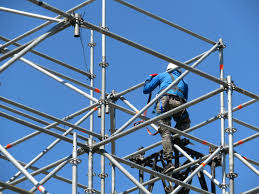Ліст . 29, 2024 14:49 Back to list
Concrete and Formwork Solutions for Innovative Construction Projects
The Evolution of Concrete and Formwork Manufacturing A Comprehensive Overview
Concrete remains a fundamental building material in construction, renowned for its strength, durability, and versatility. From towering skyscrapers to residential homes, and from bridges to roads, concrete serves as the backbone of modern infrastructure. However, the effectiveness of concrete structures heavily relies on the quality and design of formwork—the temporary molds used to shape concrete during the curing process. This article delves into the evolution of concrete and formwork manufacturing, exploring the advancements, challenges, and future trends in this vital industry.
A Historical Perspective
The use of concrete dates back thousands of years, with ancient civilizations such as the Romans utilizing volcanic ash and lime to create durable structures. Over the centuries, the formulation of concrete has evolved, leading to the development of modern concrete mixes that incorporate a blend of cement, aggregates, water, and additives. These innovations have vastly improved the properties of concrete, enhancing its strength, workability, and setting times.
Formwork, on the other hand, has undergone significant transformations. Originally made from wood, early formwork systems were labor-intensive and often led to inconsistencies in the finished product. The introduction of prefabricated formwork systems revolutionized the industry in the mid-20th century, allowing for quicker assembly and disassembly, as well as greater precision in concrete shapes. Today, manufacturers employ a variety of materials—including steel, aluminum, and plastic—to produce formwork that meets the diverse demands of construction projects.
Current Manufacturing Techniques
Modern concrete and formwork manufacturers have integrated advanced technologies into their production processes. Computer-aided design (CAD) software allows engineers to create precise models of formwork systems, optimizing them for specific projects. Additionally, the use of automation and robotics in manufacturing has improved efficiency and consistency in concrete production.
Moreover, the rise of precast concrete elements has further transformed the industry. Precast concrete is produced in a controlled factory setting, allowing for greater quality control and faster construction times on-site. Companies can manufacture components such as beams, columns, and wall panels that are ready for assembly, significantly reducing labor costs and project timelines.
Sustainability in Concrete and Formwork Manufacturing
concrete & formwork manufacturer

As the construction industry faces increasing pressure to adopt sustainable practices, concrete and formwork manufacturers are exploring eco-friendly solutions. Traditional concrete production is carbon-intensive, contributing to global greenhouse gas emissions. In response, manufacturers are developing alternative mixes that utilize recycled materials like waste glass, fly ash, and slag to reduce the environmental impact.
Similarly, formwork systems are evolving to incorporate sustainable materials. Innovative companies are manufacturing formwork from recycled plastics and other eco-friendly substances, minimizing waste and promoting the circular economy. Additionally, advancements in reusable formwork systems allow for multiple iterations of the same mold, reducing the need for new materials in subsequent projects.
Challenges Facing the Industry
Despite the progress made in concrete and formwork manufacturing, several challenges persist. Fluctuating raw material prices can impact production costs and affect project budgets. Moreover, labor shortages in the construction sector pose a significant barrier, as skilled workers are essential for the effective installation and removal of formwork.
Quality control in both concrete mixtures and formwork systems is critical to ensure the safety and longevity of structures. Non-compliance with industry standards can lead to catastrophic failures, underscoring the need for ongoing training and education within the workforce.
The Future of Concrete and Formwork Manufacturing
Looking ahead, the concrete and formwork manufacturing industry is poised for further advancements. The integration of smart technologies, such as Internet of Things (IoT) devices, holds promise for improving monitoring and quality assurance throughout the construction process. These technologies can facilitate real-time tracking of concrete curing conditions and formwork integrity, enabling proactive adjustments as needed.
Furthermore, as urbanization continues to rise, the demand for innovative construction methods will increase. Manufacturers will need to respond with adaptable solutions that cater to diverse architectural needs while maintaining sustainability.
In conclusion, the relationship between concrete and formwork manufacturing is integral to the construction industry. As technology advances and sustainability becomes a priority, manufacturers must navigate challenges while embracing innovations that enhance efficiency, quality, and environmental responsibility. The future of concrete and formwork is bright, offering exciting possibilities for the construction of resilient and sustainable infrastructure.
-
Efficient Table Formwork for Fast Slab Construction & Reusability
NewsAug.18,2025
-
Timber Beam H20 Formwork & Shuttering - Durable & Reliable
NewsAug.17,2025
-
Timber Beam H20: Premium Formwork & Shuttering Solutions
NewsAug.16,2025
-
Premium H20 Timber Beam for Formwork & Slab Shuttering
NewsAug.15,2025
-
China Single Sided Wall Formwork: Fast, Flexible Solutions
NewsAug.14,2025
-
Scaffolding Jacks: Durable Screw, U-Head, Swivel & Base Jacks
NewsAug.13,2025